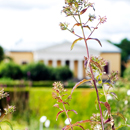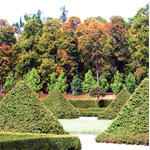
Photo credits:
Stewen Quigley
Fanny Wonu Veys
Barbro Klein Fellow, SCAS.
Curator Oceania, the National Museum of World Cultures in the Netherlands (Tropenmuseum,
Amsterdam;
Museum Volkenkunde, Leiden; Afrika Museum, Berg en Dal; Wereldmuseum,
Rotterdam)
Fanny Wonu Veys obtained her PhD at the University of East Anglia in Norwich, working at the
intersection of anthropology, art history and museology. Her fieldwork sites include New Zealand
(since 2000), Tonga (since 2003) and Arnhem Land, Australia (since 2014).
She has worked at the Museum of Archaeology and Anthropology in Cambridge (2004–06, 2008–
09) and has held postdoctoral fellowships at the Metropolitan Museum of Art in New York (2006–
07) and the Musée du Quai Branly – Jacques Chirac in Paris (2007–08).
Veys co-curated a barkcloth exhibition, Tapa, Étoffes cosmiques d’Océanie, in Cahors(2009). She
has contributed curatorial expertise to numerous exhibitions and has curated the following large
shows: Mana Maori (2010–11, Museum Volkenkunde, Leiden), Things that Matter (semipermanent
2017 –, Tropenmuseum, Amsterdam), What a Genderful World (2019–20, Tropenmuseum, Amster-
dam; 2021–22, Wereldmuseum, Rotterdam) and A Sea of Islands – Masterpieces from Oceania (2020
-21, Museum Volkenkunde, Leiden). Since 2014, she is the President of the Pacific Arts Association
Europe.
She has published dozens of articles in journals and books, including “White for Purity, Brown for
Beautiful Like Us and Black Because it is Awesome” (Frances Lennard & Andy Mills, eds., Sidestone
Press, 2020). Her most recent single author book is Unwrapping Tongan Barkcloth: Encounters,
Creativity and Female Agency (Bloomsbury, 2017). Her most recent co-edited book is Collecting
in the South Sea. The Voyage of Bruni d'Entrecasteaux 1791–1794 (Sidestone Press, 2018). Since
2020, she is the chief editor of the Provenance series published bythe National Museum of World
Culture.
As a Barbro Klein Fellow in the spring semester of 2022, Veys will research and – using visual and
textual sources – piece together the fragmentary historical and anthropological narrative of tattooing
in the Pacific archipelago of Tonga.
This information is accurate as of the academic year 2021-22.






